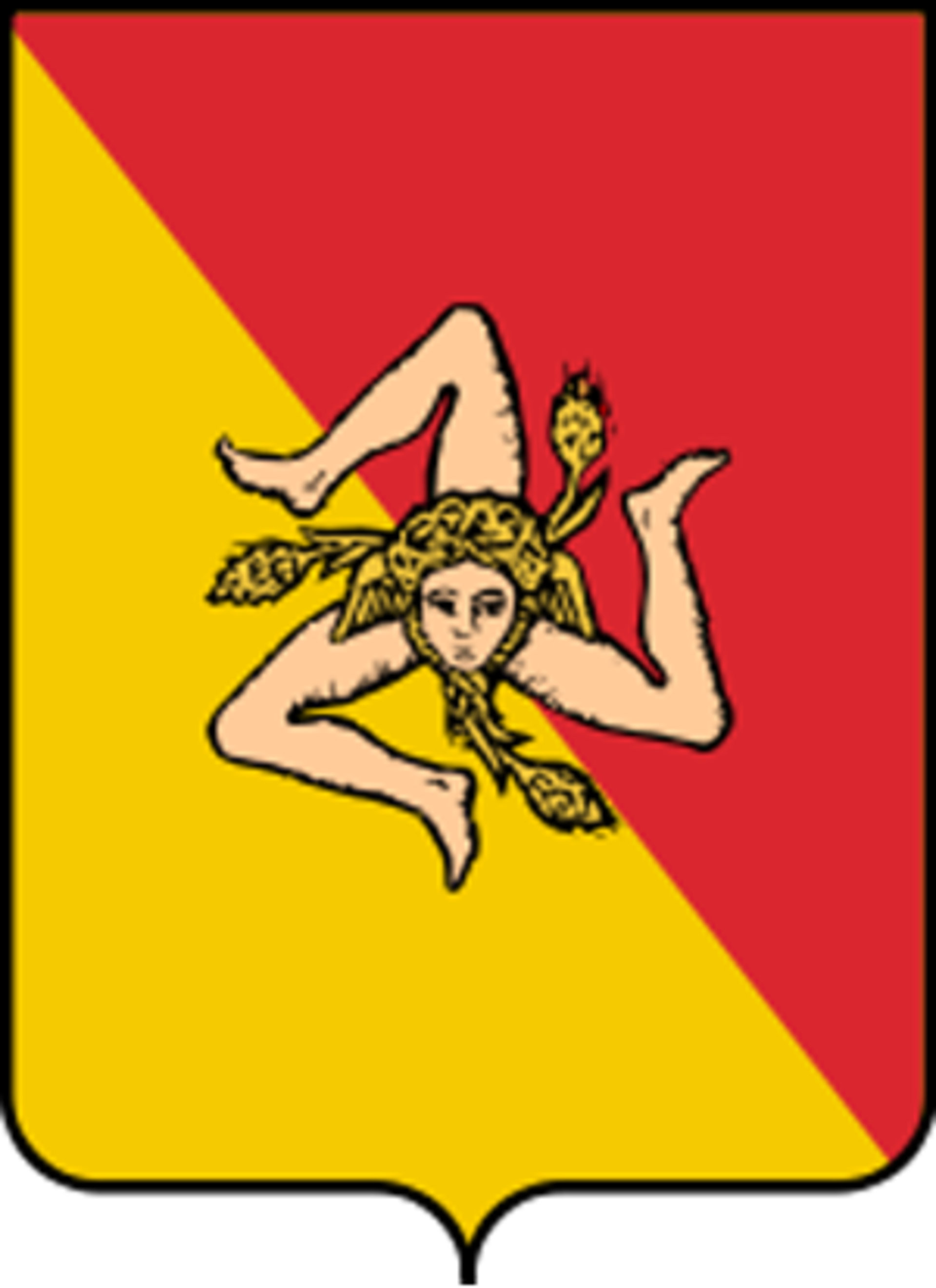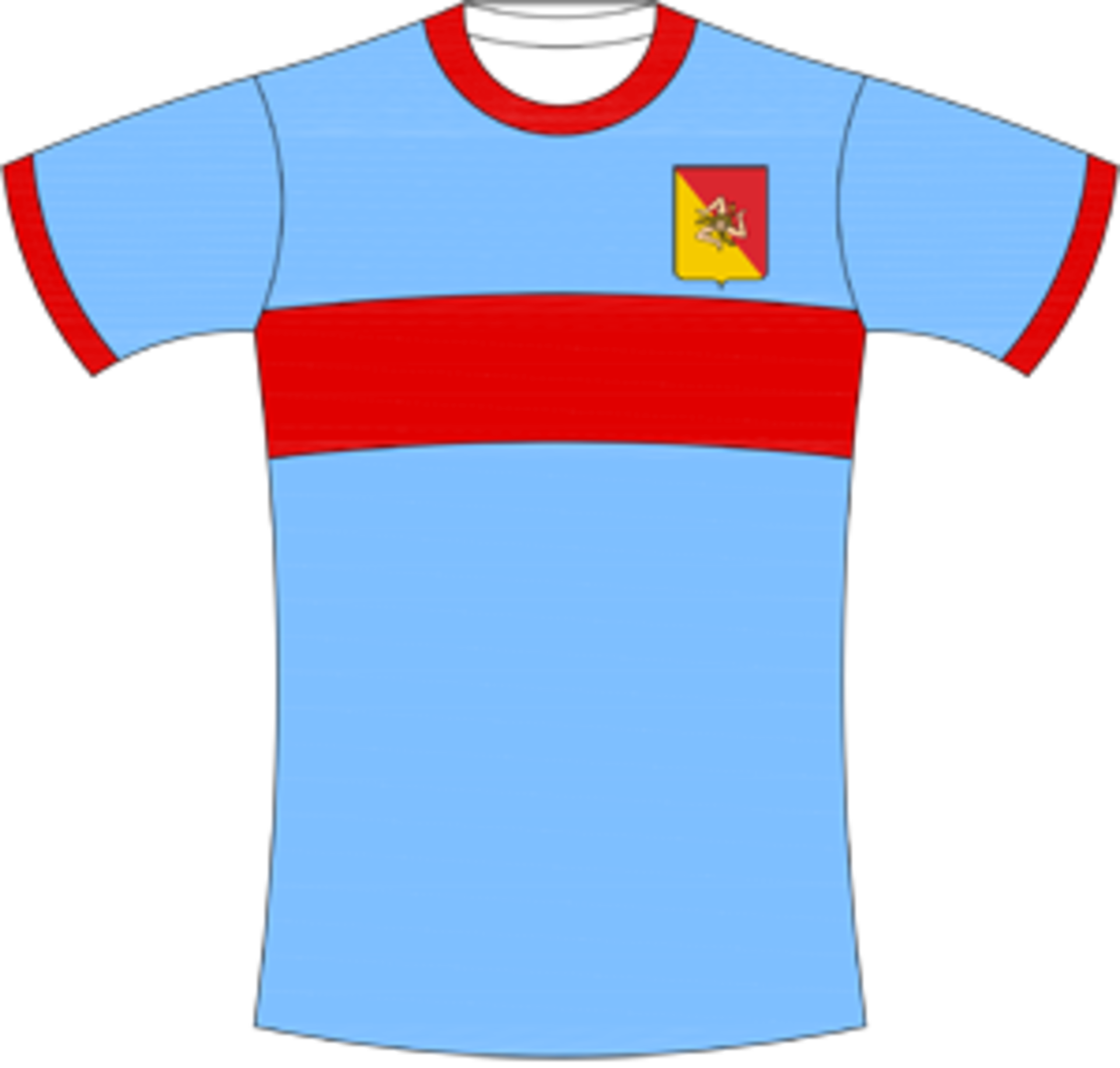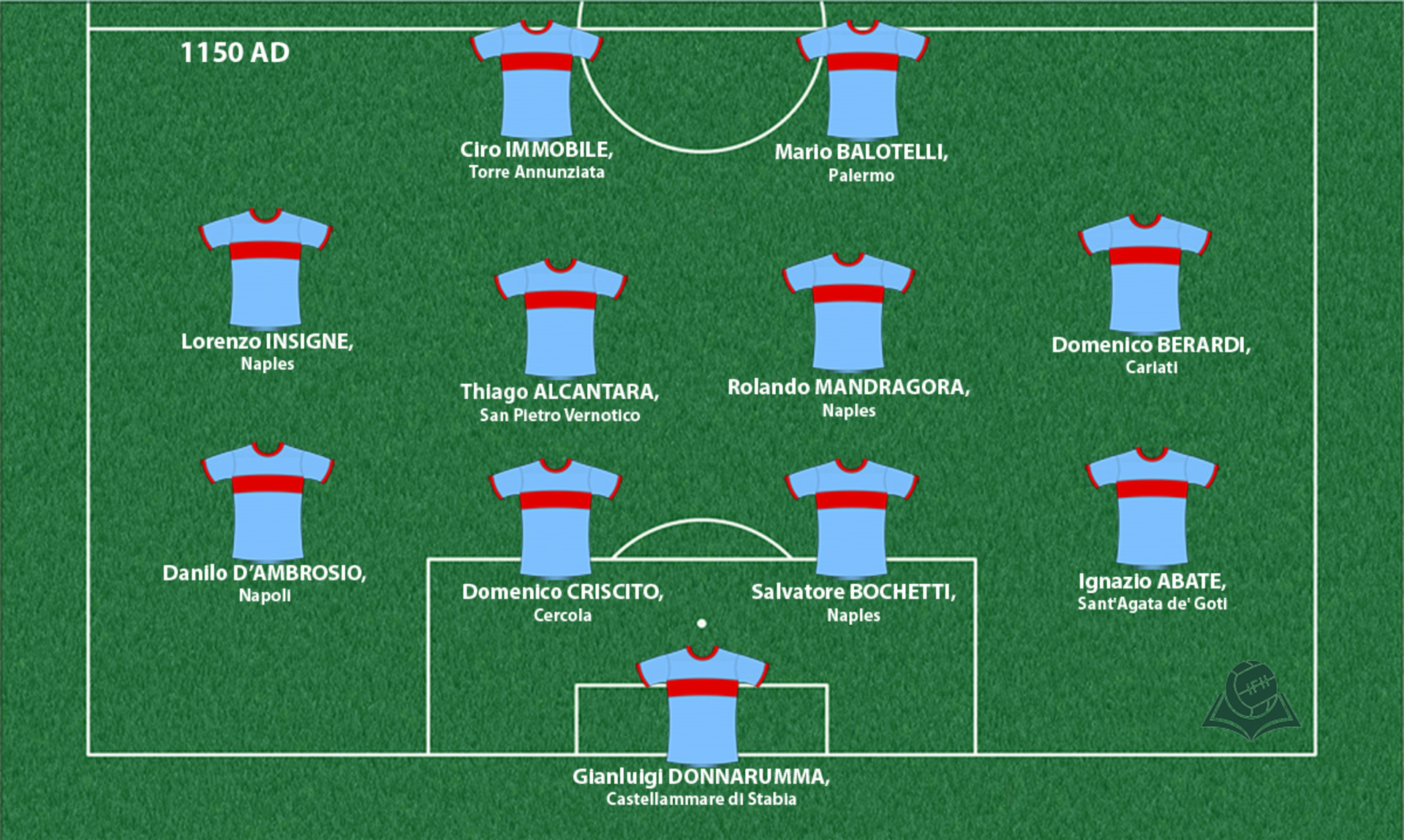The Kingdom of Sicily
In the first half of the 11th century Normans had reached the south of the Apennine Peninsula, where they, as experts on feudal warfare, gained employment as mercenaries in the ever-changing service of now Lombards, now Byzantines. Soon they had stopped asking for money in return for their services, and started demanding lands.

Coat of arms

Shirt
| Position | First name | Last name | Mjesto rođenja | Like | Dislike | |
|---|---|---|---|---|---|---|
| GK | Antonio | MIRANTE | Castellammare di Stabia |
1 |
1 |
|
| GK | Gianluigi | DONNARUMMA | Castellammare di Stabia |
16 |
4 |
|
| GK | Luigi | SEPE | Torre del Greco |
1 |
1 |
|
| DC | Paolo | CANNAVARO | Naples |
6 |
1 |
|
| DRC | Armando | IZZO | Naples |
1 |
1 |
|
| DLC | Domenico | CRISCITO | Cercola |
4 |
1 |
|
| DLC | Salvatore | BOCCHETTI | Naples |
2 |
1 |
|
| DLC | Sebastiano | LUPERTO | Lecce |
1 |
0 |
|
| DRL | Danilo | D'AMBROSIO | Naples |
3 |
0 |
|
| DR | Gaetano | LETIZIA | Naples |
1 |
0 |
|
| DR/AMR | Ignazio | ABATE | Sant'Agata de' Goti |
5 |
0 |
|
| DL | Cristian | MOLINARO | Vallo della Lucania |
1 |
0 |
|
| DLC/ML | Giovani | MARCHESE | Caltanisetta |
2 |
0 |
|
| DL/ML | Giuseppe | PEZZELLA | Naples |
4 |
0 |
|
| DMC/DC | Rolando | MANDRAGORA | Naples |
4 |
0 |
|
| MC | Antonio | NOCERINO | Naples |
3 |
1 |
|
| MC | Simone | MISSIROLI | Reggio Calabria |
1 |
0 |
|
| MC | Thiago | ALCANTARA | San Pietro Vernotico |
18 |
1 |
|
| MLC | Jacopo | DEZI | Atri |
1 |
1 |
|
| AMRLC | Luca | GARRITANO | Cosenza |
1 |
0 |
|
| AMRL | Camilo | CIANO | Marcianise |
2 |
0 |
|
| AMRL/SS | Lorenzo | INSIGNE | Naples |
10 |
3 |
|
| SS/AMRL | Simone | LO FASO | Palermo |
1 |
0 |
|
| FRLC | Domenico | BERARDI | Cariati |
19 |
2 |
|
| FRLC | Fabio | QUAGLIARELLA | Castellammare do Stabia |
11 |
0 |
|
| FC | Ciro | IMMOBILE | Torre Annunziata |
9 |
3 |
|
| FC | Francesco | CAPUTO | Altamura |
2 |
0 |
|
| FC | Graziano | PELLE | San Cesario di Lecce |
12 |
3 |
|
| FC | Marcello | TROTTA | Santa Maria Capua Vetere |
0 |
2 |
|
| FC | Mario | BALOTELLI | Palermo |
5 |
5 |
|
| FC | Simone | ZAZA | Policoro |
4 |
2 |
|
| FC/SS | Roberto | INGLESE | Lucera |
2 |
0 |
(Today part of: southern Italy plus Sicily)
Normans can credit their rise on their military skills, but also on the good relations with the popes, who made use of them in their conflicts with the Emperors. On the other hand, strengthened by this most authoritative protection, they could have presented their conquests as Crusades against the Muslim Saracens, and the schismatic Byzantines of Italy. Virtually at the same time, the Normans had conquered England, the south of the Peninsula with Sicily, but an important difference between these two occurrences was that the conqueror of England had already been a mighty Norman duke, and had become the king of an already established kingdom, while the Sicilian Robert Guiscard (ruled 1057 – 1085) was an adventurer who had to be very tactical and persistent to unify the mutually opposed, and religiously and culturally different old states, emirates, and autonomous cities in those parts. Furthermore, they had to defend the northern border from the powerful Holy Roman Emperors, and sometimes from the pope. Such united Kingdom of Sicily, with its center in the multicultural Palermo, had been inherited at the end of the 12th century by thefuture Emperor from the Swabian dynasty of Hohenstaufen.
In mid-13th century the Anjou family became its rulers; they were the counts of Provence and the cousins of French kings who will soon lose Sicily in their conflict with the Aragon dynasty, but will continue to use the name the Kingdom of Sicily (which referred to the part of the Peninsula with Naples), not abandoning their pretensions for the island. Thus, until the 15th century, there will exist two different states with the same official name.
Sources
- Roberto LOPEZ, Rođenje Evrope : stoljeća V-XIV, Zagreb, 1978.
- Giuliano PROCACCI, Povijest Talijana, Zagreb, 1996.
- ''Kingdom of Two Sicilies'', https://en.wikipedia.org/wiki/Kingdom_of_the_Two_Sicilies#Name
- Grb: http://www.worldatlas.com/webimage/countrys/europe/sicily/sicilyflags.htm
